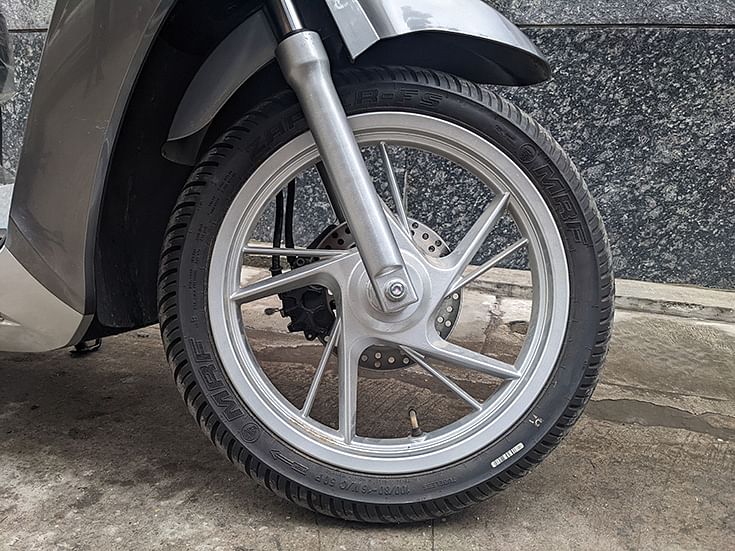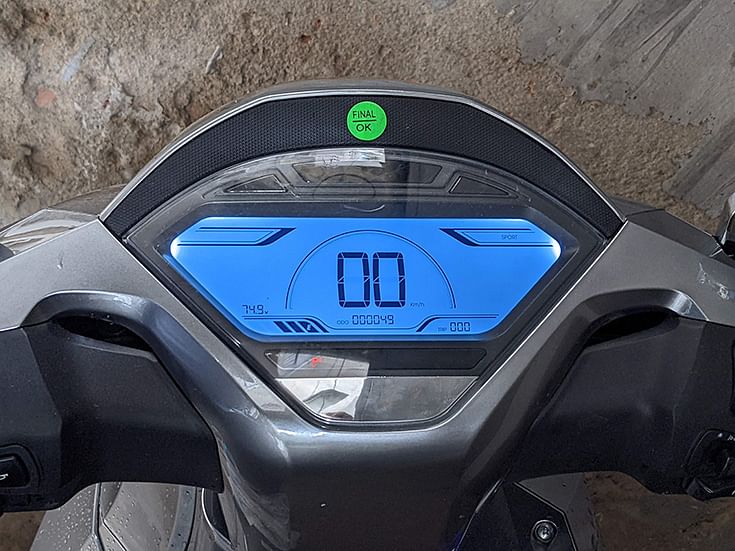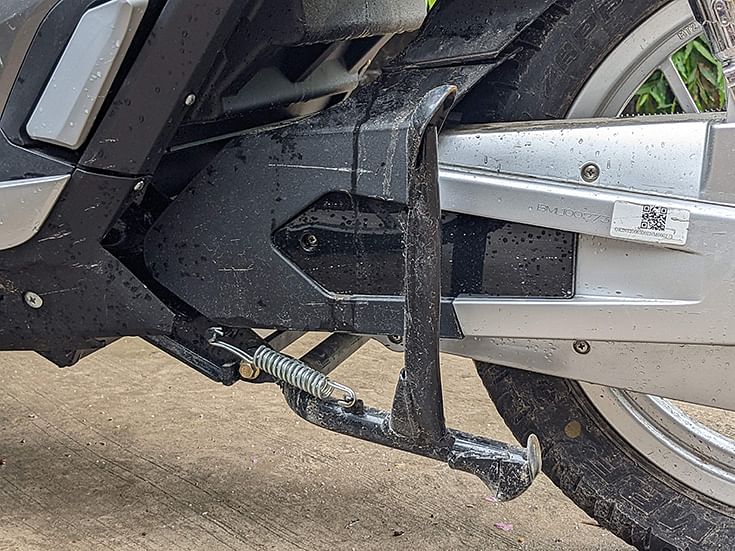Okinawa Okhi-90 EV: High on range but needs more finesse
The Okhi-90 e-scooter misses out on being a better product and lacks the finesse and quality offered by a few mainstream rivals.
In today’s market reality of wallet-hurting petrol prices, going electric on two wheels is one salve for those who seek affordable mobility. Not surprisingly, since the past 18-odd months, electric two-wheeler sales in India are on the upswing – cumulative sales were 240,662 units in the first half of CY2022 itself, contributing 3.6 percent to India’s total two-wheeler sales (January-June 2022: 6,695,434 units), as per retail data issued by apex dealer body FADA.
The Gurugram-based Okinawa Autotech emerged as the leading electric two-wheeler OEM in H1 CY2022, selling 47,121 units between January and June, and capturing around 20 percent of the overall market which continues to grow at a rapid pace. For the first four months of the ongoing fiscal (April-July 2022) too, Okinawa is in pole position with 35,386 units.
Eyeing enhanced growth potential this year and beyond, the company introduced its flagship model – the Okhi-90 – earlier this year in March, at a price-tag of Rs 121,000, ex-showroom, after factoring FAME-II subsidies.
Visually distinct with its moto-scooter styling due to the large 16-inch wheels, the electric scooter also claims to offer the best range – 160km on a single charge – amongst all products on sale in the market today.
Clean design, appealing styling
The Okhi-90 sports appealing styling with rounded edges and curved design of its body panels. The LED headlight at the centre of the handlebar looks alluring and so do the vertically-placed DRLs on the front apron. The side profile bears a clean design with a rising beltline, while the rear gets a rather enchanting all-LED tail-light setup placed just underneath a chunky grab handle, lending this scooter a very upmarket feel.

What is also unique is the application of 16-inch alloy wheels – the biggest on any scooter available in India. There are telescopic forks upfront and a dual shock absorber setup at the rear. The scooter gets disc brakes at both the ends.
Feature-laden EV
The Okhi-90 sits high off the ground with a tall riding position, and gets a blue-backlit full-digital instrument cluster that displays speed and state-of-charge of the 3.6kWh lithium-ion battery pack. The handles are grippy and it gets a switch on the right-hand side to toggle between the two riding modes – Eco and Sport. To the left are the buttons for the pass light, horn and indicator, both of which seem to have interchanged their traditional positions and get confusing for the rider on the move.

Full-digital instrument cluster on the Okhi-90 is legible and easy on the eye.
The e-scooter also gets two hooks upfront and a stowage pocket below the handlebar to store knick-knacks. With a large footprint, one would expect the under-seat storage pegged at 40 litres to be substantial too, but the Okhi-90 could accommodate only take a half-face helmet in its belly, owing to the placement of the removable li-ion battery pack under the seat.
The battery pack, which is detachable and can be charged with any 15 Ampere socket, is extremely heavy and unergonomic to pull out and lift. Rather than one top-mounted handle screwed on top of the Trontek-sourced battery pack, the company could have designed two handles on either side for easier carriage, or for two people to hold it simultaneously.
The company claims a recharge time of about 5 hours from zero to 100 percent charge on this battery pack through the supplied 220V AC to DC charger.
Riding impression
When it comes to the real-world riding experience, the Okhi-90 comes across as a scooter that does the job well, with linear power delivery from its rear-hub mounted 3.8kW electric motor. The power, however, doesn’t come immediately like one would expect in an electric scooter, but builds up gradually. The company claims a top speed of 90kph in the Sport mode – the reason behind the name of this electric scooter.
The difference between the two riding modes is apparent with a sharper throttle response in the Sport mode, while the Eco sees the power delivery getting much subdued, especially while taking off from standstill.
The dual-disc brake setup offers sufficient bite and brings down the scooter to a halt in a composed fashion. However, where the scooter falls behind is in the riding dynamics department, with the suspension setup clearly lacking the calibration and finesse of any other product from an established OEM. The ride quality is extremely harsh, and the handlebar transmits a lot of the road undulations to the rider’s arms. Moreover, the high-set handlebar also sends the scooter’s weight on to the rider’s shoulders, making fatigue take over within a few minutes into the ride.
Cornering the Okhi-90 at high speeds doesn’t give much confidence either, but what the scooter excels in, is going over bad roads due to its large wheel size. Although the ride remains unsettled and uncomfortable.
Rough edges remain
While part quality is acceptable for the most part, the Okhi-90 falls far behind what any mainstream OEM would offer in an entry-level two-wheeler. The chrome embellishments on the body might not hold up over the years, and the chrome-finished rear-view mirrors already came off loose while going through a pothole on this test bike. The right-hand-side rear-view mirror could not be adjusted to clearly see the view behind altogether.

Main stand and side-stand don't collapse with ease.
Also, the Okhi-90 has a side-stand mechanism that doesn’t feel well engineered and calls for a fair amount of effort from the rider’s left foot to send it back up on its resting position. Similar issue with the main stand too, which feels an afterthought and does not collapse unless one tilts the scooter to one side and drags it forward.
In an attempt to offer modern features to customers, Okinawa is also offering a key fob and a mechanical key, which is required to unlock the scooter and turn it on. However, the entire mechanism could have been much more simplified, but has been made extremely complex and inconvenient to use on a day-to-day basis.
While it attracted a lot of attention, thanks to its smart styling, and got other motorists and also pedestrians enquiring about the product wherever this reporter stopped with this electric scooter, the Okhi-90 comes across somewhat as an unpolished product yet, lacking the finesse and quality offered by a few mainstream electric two-wheeler OEMs in India.
Although many seeking wallet- and eco-friendly mobility on two wheels would queue up to buy this electric product offering 160km range, at Rs 103,000 on-road in Delhi and Maharashtra, it would be worth waiting for the updated version of the Okhi-90 which ideally would come with the rough edges ironed out.
ALSO READ: Okinawa is No. 1 in electric two-wheeler retails in April-July 2022
RELATED ARTICLES
Complete List of Cars and SUVs Tested by Bharat NCAP
Bharat NCAP has crash-tested 20 models to date, including both ICE-powered vehicles and EVs.
Belrise Industries: A Story of Grit and Focus
The Belrise Industries IPO is the culmination of a multi-decade journey by entrepreneur Shrikant Badve that started in a...
Mahindra and Lightweighting: Solid Steel To Nimble Aluminum
Stricter emission regulations and rising fuel efficiency targets are driving a fundamental transformation in powertrain ...





 17 Aug 2022
17 Aug 2022
 19319 Views
19319 Views






















 Autocar India
Autocar India


 Shahkar Abidi
Shahkar Abidi


